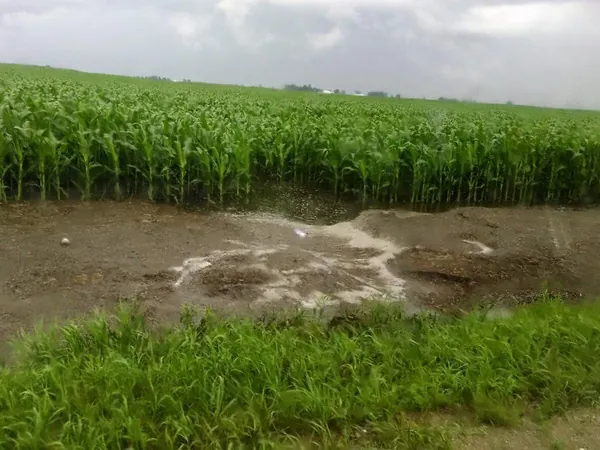
Shocking Study Reveals America's Crops Are in Danger Due to Nutrient Loss from Storms!
2024-11-18
Author: Mei
Shocking Study Reveals America's Crops Are in Danger Due to Nutrient Loss from Storms!
In a striking revelation, researchers from Penn State have uncovered that American soils are losing vital phosphorus—a nutrient critical for crop health and sustainability—due to escalating rainfall and storm events. According to a new study published on November 18 in the Proceedings of the National Academy of Sciences, agricultural lands across the United States have seen a notable increase in phosphorus loss over the past 40 years, despite ongoing efforts to mitigate this issue.
Li Li, a civil and environmental engineering professor and the study’s lead author, warns, “We've seen from recent weather events how increased water flow can lead to devastating flooding and mudslides. Our research aimed to determine what happens to our soils during these storms, and the results are concerning: we're experiencing a substantial loss of phosphorus, a finite element essential for sustaining life.”
Phosphorus is paramount for various biological functions, including DNA creation and energy transfer within cells. Unlike nitrogen—which is abundant and renewable—phosphorus is a non-renewable resource. Once it is washed away from agricultural land into rivers, it cannot be effectively returned, resulting in potentially dire consequences for crop yields and food prices.
Li elaborates, “The drain of phosphorus from farmland can lead to diminished crop production, which could inflate food costs. Furthermore, when this nutrient enters waterways, it may trigger harmful algal blooms, making water unsafe for swimming and fishing. These blooms can deplete oxygen levels, leading to fish kills and posing challenges for drinking water treatment, ultimately increasing costs for consumers.”
Utilizing advanced deep learning models, the study analyzed data spanning four decades (1980-2019) from 430 rivers throughout the contiguous United States. Alarmingly, while 60% of these rivers exhibited declining phosphorus levels, the total phosphorus flowing into waterways has surged. Agricultural regions are identified as the primary contributors, with phosphorus concentrations rising in rivers adjacent to farmland.
“This indicates that our efforts to combat phosphorus runoff from agricultural sources are not as effective as anticipated,” Li commented. In contrast, phosphorus levels in rivers near urban areas have improved, suggesting that pollution control measures targeting point sources, like wastewater treatment facilities, are working effectively.
Ultimately, the persistent increase in phosphorus in rivers overall can be attributed to the surge in extreme weather events and heavy rainfall—factors that are largely driven by climate change. “Our regional successes in pollution management are overshadowed by a broader, escalating environmental challenge,” Li emphasized.
To combat phosphorus pollution moving forward, the authors of the study propose a need for innovative solutions and improved agricultural practices, especially as increasing rainfall events complicate matters. Enter Phospholutions, a groundbreaking technology company founded by Penn State alumnus Hunter Swisher. His company has developed a fertilizer designed to enhance phosphorus efficiency, showing a significant 78% reduction in runoff potential compared to traditional fertilizers.
As climate change continues to impact rainfall patterns and nutrient runoff, this study underscores the urgent need for cooperative, multi-faceted approaches to protect American agriculture and ensure food security for the future. With the stakes this high, will you be affected by rising food prices and environmental hazards? Stay informed and make a difference!


 Brasil (PT)
Brasil (PT)
 Canada (EN)
Canada (EN)
 Chile (ES)
Chile (ES)
 España (ES)
España (ES)
 France (FR)
France (FR)
 Hong Kong (EN)
Hong Kong (EN)
 Italia (IT)
Italia (IT)
 日本 (JA)
日本 (JA)
 Magyarország (HU)
Magyarország (HU)
 Norge (NO)
Norge (NO)
 Polska (PL)
Polska (PL)
 Schweiz (DE)
Schweiz (DE)
 Singapore (EN)
Singapore (EN)
 Sverige (SV)
Sverige (SV)
 Suomi (FI)
Suomi (FI)
 Türkiye (TR)
Türkiye (TR)